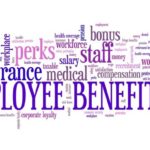Blog
 5 Ways to Improve Work Performance
5 Ways to Improve Work PerformanceAs a manager, do you know what your employees are doing at all times? The answer is most likely, “No.” The manager sets up the daily workflow and expects employees to complete their work to the company’s satisfaction. However, employees are not always focused on work which means there’s lost productivity for the company. Your …
Continue reading “5 Ways to Improve Work Performance”
Read more → 7 Employee Benefits Trends for 2019
7 Employee Benefits Trends for 2019Employee benefits continue to be an important consideration for employers who are looking to make the biggest impact with their employee investments. As unemployment rates remain low, candidates are comparing benefits that companies offer in addition to cash compensation and reputation. 1. Financial Wellness Health benefits have taken center stage in recent years with the …
Continue reading “7 Employee Benefits Trends for 2019”
Read more → “Thinking Outside the Bud” Podcast
“Thinking Outside the Bud” PodcastMark DeRosa was invited to “Thinking Outside the Bud”, a business podcast devoted to driving innovation in the cannabis space. Read more and listen to the whole discussion.
Read more → What is an FSA (Flexible Spending Account)?
What is an FSA (Flexible Spending Account)?There are several different tax-favored health plans available in the US. Your employer may choose to offer one as part of your employee health benefits, but exactly which plan will vary for each company. An FSA is a Flexible Spending Arrangement or Flexible Spending Account, which allows employees to be reimbursed for qualified medical expenses.
Read more → The Evolution of Fringe Benefits
The Evolution of Fringe BenefitsWellness programs, employee discounts, commuter benefits, and free lunches are all perks that employees may be eligible to get because they work for a company. These are sometimes called “fringe benefits”. When used appropriately, they can be a powerful tool for employers to recruit and retain talent. Recent Updates to Fringe Benefits A fringe benefit …
Continue reading “The Evolution of Fringe Benefits”
Read more → What is an HSA and What You Should Know About It
What is an HSA and What You Should Know About ItHSAs, also known as a Health Savings Account, are a benefit that employers can offer to employees to help with employee health care costs. They offer flexibility to employees while containing costs for employers. This is an interesting option when considering employee incentives, particularly health insurance. What is an HSA? An HSA is a benefit …
Continue reading “What is an HSA and What You Should Know About It”
Read more → Do You Offer Competitive Employee Benefits?
Do You Offer Competitive Employee Benefits?Employee benefits encompass a wide range of offerings that a company can provide to its employees. The most common benefits in the US include health and dental insurance, retirement savings (such as a 401(k)), vacation time, and other paid time off (such as maternity leave). But benefits don’t need to be common – they can …
Continue reading “Do You Offer Competitive Employee Benefits?”
Read more → The Perfect Work Environment for Millennial Employees
The Perfect Work Environment for Millennial EmployeesDetermining exactly who a millennial is can be confusing because there are often conflicting ideas of what birth years are included in a generation. However, Pew Research Center defines millennials as those born between 1981-1996. Millennials are now the largest generation in the workforce, making up 35% of labor force participants as Baby Boomers continue …
Continue reading “The Perfect Work Environment for Millennial Employees”
Read more → 5 HR Challenges Faced by Nonprofit Organizations
5 HR Challenges Faced by Nonprofit OrganizationsNonprofit organizations have employees, so they face HR challenges just like for-profit organizations do. These challenges can be related to recruitment and retention, performance management, employee relations, compensation and benefits, and anything else that impacts the employee in the workplace. According to Statista, there were 1.5 million nonprofits in the US in 2020. Changes to …
Continue reading “5 HR Challenges Faced by Nonprofit Organizations”
Read more → History of Maternity Leave in the US
History of Maternity Leave in the USMaternity Leave Law – Updates As of April 1, 2020, small businesses with fewer than 500 employees are required to provide emergency paid sick leave and family leave benefits to employees impacted by COVID-19, according to the Families First Coronavirus Response Act. In 2020, eligible employees in 5 states either have access to paid family …
Continue reading “History of Maternity Leave in the US”
Read more →
